One of the Joys of Maturity |
 Custom Search
|
| Affiliated Advertisers |
Clicking through one of our banner ads or some of our text links and making a purchase will produce a small commission for us from the sale. The Old Guy's Garden Record Before writing today's posting, I took a good look at our blog of the last two Februaries, noting that last year we were experiencing some warm days that foreshadowed an unseasonably warm, dry spring and a summer of drought. We had daffodils up early in the month, crocuses in full bloom mid-month, garlic up that had actually emerged in late December, and we direct seeded peas on February 28! The weather pattern that preceded last summer's drought doesn't seem to be repeating itself. Whew!
Two years ago, we were just coming off a really severe winter storm that affected much of the country. We first had a soil heating mat fail and then had our power go out for a few days due to a winter storm, but somehow still got decent germination on our geraniums. A normal February is a busy time for us indoors, but also a time for patience. There are lots of plants to be started this month, and a whole lot more that one needs to be patient with and hold off seeding until the end of the month or early next month. Late geraniums, petunias, impatiens, dusty miller, dianthus, and vinca all can be seeded almost anytime this month to be ready for spring transplanting into the garden and flowerbeds. We already have geraniums, onions, shallots, leeks, and petunias seeded in January to tend, along with all of our gloxinias and the porch plants we brought inside to overwinter. We'll need to start our first planting of brassicas this month. Counting back 6-8 weeks from an expected transplanting date the first week of April, we'll try to seed our broccoli, brussels sprouts, cauliflower, cabbage, and kohlrabi somewhere between February 9 and 23. Getting our broccoli and cauliflower transplanted as early as possible assures us of good, large, main heads before the summer heat sets in. It also allows us to pick lots of luscious sideshoots for a month or so after the main heads are devoured or frozen. This year I plan to seed broccoli and cauliflower twice about three weeks apart, as I usually can transplant some of it into our large East Garden several weeks after our main raised bed is planted. Our raised bed dries out for planting far earlier than the heavy clay in the East Garden. The later planting will probably be for main heads only, as by the time it matures, things will probably be getting pretty hot and dry here, leading to bolting by even the most heat tolerant broccoli. But if we can sneak in a bit more broccoli, it will be nice. Wait, Wait, Wait.. While there's always a great temptation to go ahead and get most of our vegetable transplants started this month, some crops such as tomatoes, peppers, and melons really will do better if one waits to start them just 6-8 weeks before transplanting. Johnny's Selected Seeds provides an excellent online Seed Starting Date Calculator that can be quite helpful in planning when to start transplants indoors...and when to hold off for a while. We have an old page that links to several sources for last and first frost dates (needed to use the calculator). Webinar Update The archived version of the recent Seed Savers Exchange webinar on Starting a Seed Collection that was overbooked and resulted in over a hundred folks getting shut out is now available on YouTube.
As to the shade issue, I quickly bought a replacement tree and transplanted it a bit further out from the house to eventually, probably not in my lifetime, provide some shade for the house. The tree came from Lowes. When it died and I dug up its remains, it was obvious they'd cut the taproot of an oak tree! I should have noticed that when I transplanted it. I next tried a volunteer oak tree that sprouted in our garden. It put on a few more leaves, but never grew much before it died.
If you visit any of our archive pages, you may have noticed a definite difference in our advertising approach between our index or main page and the archives. I pretty well try to keep advertising at a minimum on our main page, with no more than three or four banners per month. I do not allow any mouseover popups on either our main or archive pages, as those are a giant annoyance for the reader. There are some embedded text link ads, but those are generally there to help readers find plant varieties from vendors. And most of the linked varieties don't go to any of our paying affiliate advertisers, but rather to the source with the best quality seed for the best price! Ah, but when you get to the archives of previous months in the Senior Garden, there's lots and lots of ads. At the end of each month, I go back and make sure there's a banner ad between most of the daily postings. That seems to keep most of our affiliated advertisers happy. I finished loading up our January archive with ads late last night.
I Lied I wrote last month in reference to some of Jim Crockett's gardening books that if someone clicked through one of our ads and bought a book that I'd "make about a 4¢ commission on the sale." I lied. Two good souls ordered copies, and we made 6¢ on one and a whopping 60¢ on the other. But it all adds up. Thanks! Catalog links to the various seed suppliers we use don't pay anything either, other than ones to Burpee and Generic Seeds. But frequent readers of this site already know that I really like seed catalog cover art and can't resist posting the great images our suppliers provide on their catalogs. And that brings us too... Recommended Seed Suppliers I post our listing of our trusted seed suppliers each November and update our Recommended Seed Suppliers page then and as necessary throughout the year. But since I obviously don't have any worthwhile gardening information to share today, I thought I'd repost the suppliers we trust and use year after year in case you're just getting ready to order seed. While I'm pretty diplomatic on our Recommended Seed Suppliers page in listing the suppliers alphabetically, you'll notice that's not the case here. Where possible, links are to the vendor's catalog request page.
We always try a few new suppliers each year. While we don't have a long enough track record with the companies listed below to include them with our trusted suppliers above, we ordered from each of them in the last year with good results.
I placed an order for the seed late Tuesday evening and was surprised when the order arrived in the mail on Saturday. The packet of 20 seeds I ordered ended up having 35 pretty good looking seeds in it. Many of the complaints on the Watchdog have to do with a low seed count in seed packets people have purchased, along with poor germination. With a few more seeds than I really need, I immediately took ten seeds and started a germination test (on a brown coffee filter). My purpose in looking for more Japanese Long Pickling seed was twofold. I'm a bit low on saved seed of the variety, as we didn't get any fresh seed last year. I had tried crossing our JLP strain with one from a commercial seed house that turned out to be a completely different, and not at all bad, variety of cucumber. That, of course, made any seed saved impure from potential cross pollination, which I'd encouraged by planting the varieties side-by-side. I also still want to cross our Japanese Long Pickling strain with other JLP plants from another source, as all our seed was derived from one last seed that germinated for me from my last commercial packet of JLP seed. Our strain is obviously pretty inbred, although it still produces great plants and cucumbers and provided us enough fruit last year to once again can some great bread and butter pickles. We'll be doing two plantings of cucumbers this year, isolating the plantings by both space and time. Our main planting will go in late along a trellis that will first serve to support our tall peas. The planting there will be of only our strain of Japanese Long Pickling cucumbers, first for seed production, but later for table use and canning. An earlier planting will go in an area remote from any of our garden plots in the field where our large East Garden is. It probably won't be anything pretty, as I plan to just till a spot in the hayfield, cover it with landscape fabric to hold back weeds, and closely transplant both our strain of JLP and Reimer's to encourage cross pollination. I may even hand pollinate some of the blooms. Support for the cucumbers will be provided by an old tomato cage. We should be able to avoid any crossing between the two cucumber plantings because the early planting will obviously bloom and produce fruit well before the planting along the pea trellis goes in. That's isolation by time. But the field planting will also be well over a hundred yards from the later planting, separated from it by trees and a high hedge that should discourage long range cross pollination by bees. And of course, if the Reimer's cucumbers don't appear to be true Japanese Long Pickling, they'll get pulled long before the planting along the pea trellis begins to bloom.
Petunias Transplanted
While folks on the east coast are enduring and digging out from a blizzard, we've had some fairly nice weather here of late. I've been following my own advice about not starting garden transplants too soon, but was able to get outside and get back to a project I'd started, partially completed, and abandoned over ten years ago. To please my wife and to provide some winter protection for our many cats and dogs, I'd built cat and dog houses with exterior doors into a corner of our garage years ago. While the "houses" are heated and functional, I never completed the insulated top over part of the doghouse nor a door on the cathouse to keep the cats in the enclosure and out of the garage.
I still have one small section of the doghouse top to finish and the door for the cathouse, but construction came to a screeching (actually, screaming) halt when I bashed my thumb with a hammer while driving in the last two nails on the section of top I was completing. I was using an extra, lightweight hammer, as my good, heavier hammer remains inside most of the time and swinging the tool much harder than usual to compensate for its light weight. The thumb is healing up nicely now, but oh, duh! Chick Days
The email brought back pleasant memories of raising chickens, and even though I'd written earlier this month about limiting banner ads on this page, I thought I'd include this one for old times sake. Also, I noticed that our favorite book/guide on raising chickens, The Family Poultry Flock So I've sorta violated our policy of minimizing banner ads on this page, but had a nice trip down memory lane. While I always have and still enjoy walking into farm stores during chick days and seeing all the baby birds and equipment, when Annie asked if I was going to order chickens (when I had our copy of The Family Flock in my hand), I had to laugh and say "no."
Poking around this morning in our site web statistics, I noticed a number of hits from the search term "valentine's day graphics." I'd shared a valentine graphic and link here last year to Laura Strickland's excellent MyCuteGraphics.com that I'd previously used on our now defunct Educators' News site. Since I can always use a few more random hits on the site, I'll share the info again. It might also prove helpful if you're hunting for a last minute Valentine's graphic to add to an email or printed valentine. Note that Laura's Terms of Use are extremely generous, especially for teachers, totally unlike our somewhat tongue in cheek terms of use for Senior Gardening and mathdittos2.com:
I also noticed this morning that Laura has begun adding blackline or black and white outline images of her graphics. With just a tad of photoshopping, one can enlarge such graphics to full page size, making great coloring pages for the younger set. First "Haircut" for Our Onions
Even before I started chopping away at our onions, I saw that the celery I'd slipped into an open space in one of the onion flats really needed transplanting. I only moved eight of the plants into two fourpacks, as how much celery does one really need at one time? The rest will probably languish in the onion flat, but I really should dump them and do a succession planting of celery in a week or so. I haven't grown celery in years, but it's always a treat when you can grow your own. Celery requires rich soil, which isn't a problem for us, and lots of water...which could be a real problem if we have another summer like last year. With less than half an inch of precipitation so far this month, I'm endeavoring to remain optimistic that we may have a somewhat normal gardening season this summer.
Odds 'n' Ends I really like Laura's Brown Owl Hugging a Heart graphic. If I don't get around to doing a posting tomorrow, Happy Valentine's Day. I did get out and finish the last insulated cover panel for our dog enclosure in the garage. While the doghouse isn't totally painted (I do clean paint brushes on it occasionally: Does that count?), the construction part is finally finished. Elapsed time from start to finish: about 16 years! And I still need to finish the doors on the cathouse. I'm still working to get enough geraniums germinated to satisfy me. We've had problems with our first plantings, and a second planting with all new seed isn't going much better. I started a couple of large (for me) germination tests today on the two packets of geranium seed I ordered in a bit of a panic early this month. While the seed packets list germination rates of 97% and 99%, close to what one should expect from such expensive seed, I'm not getting anything close to that rate and am going over every variable to see where the problem lies. Sadly, I think it's the seed!
I'm really, really glad to see some of our gloxinias breaking dormancy. I always get a little antsy waiting for them, thinking, "I've killed them all!" We sometimes lose a corm or two over the winter when most of our gloxinias go through dormancy. Usually, it's the plants that hadn't done well in their previous growth season, but every now and then we lose a big one. Sometimes I forget to check the resting corms often enough in their dark area, and we lose one that put up growth but died from lack of water. Thursday, February 14, 2013 - Vinca
I started part of a tray of vinca (Madagascar periwinkle) today. Vincas can make nice house plants, pot plants, or as we use them, colorful additions to flowerbeds and as edging around our raised garden beds.
I filled six fourpack inserts with sterilized planting medium and placed them in a standard 1020 seed flat. You may notice the flat is actually tripled, as I use a slotted tray with a solid tray under it to hold water but also provide some drainage for the flat. The bottom, third flat is there simply to protect the solid flat from punctures!
While I usually bottom water flats, I top watered the planting medium today with very warm water before seeding. I also added a bit more water to the flat itself, as the planting medium had started out fairly dry. Vinca seed is fairly small, but not dusklike, so I was able to make a shallow depression in the soil of each fourpack cell, drop in a single seed, and brush enough soil back over the hole to cover the seed. I used a new packet of Pacifica XP and an older packet of Mediterranean XP for the seeding. I covered the flat with a clear humidome to hold in moisture and provide a bit of clearance for when the plants emerge. The humidome and flat went into a the black trash bag, with the extra bag material going on top for more protection from light, and then the whole thing went onto the hot shelf. Odds 'n' Ends I noticed this week that our daffodils and tulips are beginning to come up. The daffodils are pretty frost hardy, but it's a bit early for the tulips. They're already showing a bit of freeze damage.
What got me going on planting today was a "visit" to Johnny's Selected Seeds' Seed Starting Calculator. Although I've started almost all my own transplants for years, I still like to check their calculator to make sure I get everything I want started on time and don't leave anything out. Sure enough, with a last frost date entered of May 1, the calculator suggested that I should have started our parsley towards the end of last month.
And actually, there's still plenty of time to grow good parsley. The calculator just shows the earliest one might start and transplant it. Stokes recommends one "Sow seed from May 1st to July 1st; every two weeks, for a fresh supply, till the snow flies." We still have a bit of parsley left that we dried summer before last, and of course, a small parsley plant on the windowsill. Nevertheless, I dug our bag of herb seed out of the big freezer and started a pot each of Moss Curled, Dark Green Italian, and Giant of Italy. Parsley is not hard to start, but you have to be patient: The seed may take 3-6 weeks to germinate! I took three clean pots, filled them with sterilized soil mix, and watered them. I spread 10-20 parsley seeds across the soil of each pot and covered it with a thin layer of soil. The pots went into a tray with a humidome cover to hold in moisture. Then, it's just a matter of waiting for the seed to sprout.
Some impatiens seed is said to be light sensitive, so I only covered the seed with a light layer of vermiculite. The pots went into the tray over our heating mat (set at 73o F) with a humidome cover. The dianthus seed got a thicker layer of vermiculite, since I had the bag out, and went into the same tray. And while looking through my seed order records and seed inventory, I discovered that I'd ordered fresh Pacifica vinca seed from Twilley this year, so I started two more fourpacks of it and added them to the tray I started yesterday and put on our hot shelf. The Twilley seed is simply labeled as "Pacifica," while the seeds I planted yesterday were all types of "Pacifica XP." I seem to remember getting larger plants out of the old Pacifica strain, so it will be interesting to see if I was right. Note about variety links: Variety names are generally linked to the vendor from whom we purchased our seed, and where possible, lead to the vendor's web or catalog page for that variety as a service to Senior Gardening readers. We don't purposely aim our links to affiliated advertisers, although I suspect that Burpee Saturday, February 16, 2013 - A Few Words about Pots
I meant to write a few words yesterday about the various types of planting containers we were using. Almost anything that will hold soil and provide some bottom drainage will do for seed starting. Remember using wax paper milk cartons to start seeds in elementary school? Our impatiens yesterday went into three plastic bottle reinforcers, the kind that came on the bottom of two liter plastic bottles a long, long time ago. I generally reserve those containers for starting gloxinia seed, but I won't be doing any of that before the impatiens are well out of those containers. The parsley went into three round, plastic pots, with the dianthus going into square plastic pots. Our petunias were planted in used, styrofoam egg cartons. And finally, the new vinca seed I found went into fourpack inserts.
Fourpack inserts give the emerging plants plenty of room to grow and a good reservoir of moisture to draw from. But when you drop a seed per cell, you inevitably end up with cells where the seed didn't germinate. I usually pop a couple of seeds into a few cells to make up for it. But fourpacks also take up a lot of space and use up a lot of planting medium. But they sure are easy to use when you need to start a whole flat or tray of plants.
A number of years ago I started some parsley in a six inch pot in December and got busy with other stuff until mid-January. The parsley germinated in record time, and I had a lovely, large pot crammed with parsley plants to separate and transplant! While you can pick up flats, pots, and sometimes even inserts at a lot of outlets, we've had excellent luck using the Greenhouse Megastore for our standard flats, inserts, and hanging basket pots (and hangers). Annie and I took in a Kathleen Madigan performance at the Murat Theater (Old National Center) in Indianapolis last night. It was a good show, with Madigan's razor wit keeping the crowd in stitches throughout the show.
As we usually do when attending events in the big city, we included a dinner out and stayed overnight in town. Since hotels in downtown Indy run a bit on the expensive side, we tried a bed and breakfast that was within easy walking distance of the Murat. The Nestle Inn turned out to be an excellent choice, as the accommodations provided by the extremely personable B&B hosts, Leesa and Bob Smith, were outstanding. If you're planning a similar overnight in Indy, especially if attending an event at the Murat, the Nestle Inn is definitely a good alternative to Indy's major downtown hotels. Tuesday, February 19, 2013 - Drought or a Normal Summer?
A news item that appeared in a lot of Gannett papers Sunday caught my attention yesterday, Forecasters worry about another drought in 2013 by Christopher Doering. It seems that a number of folks testifying before a recent Senate Agriculture, Nutrition, and Forestry Committee hearing had some less than cheery predictions about precipitation for the next few months and summer. "Roger Pulwarty, a director with the National Oceanic and Atmospheric Administration who focuses on drought, told lawmakers on the Senate Agriculture Committee last week, 'The continuing conditions really look like they’re setting up for a very similar level of drought in the Midwest and West.'" Others expressed more optimistic views. While we had a really wet January here, we're still not up to an inch of precipitation this month, even after a good rain last night. But in researching the story linked above and another by written by Derrick Cain, Drought likely to drag on through 2013, Senate Ag Committee told, I ran across a cool table that includes the U.S. Drought Monitor, which we regularly use on Senior Gardening, and the U.S. Seasonal Drought Outlook on the National Weather Service Climate Prediction Center, which I was clueless about until this week. Their graphic appears to give some hope for us in most of Illinois and all of Indiana and Ohio of a wetter summer. And since the table was a government publication that we as taxpayers have already paid for, I was able to reproduce it here for you. But if you're into watching this stuff, you really might want to bookmark the National Weather Service Climate Prediction Center. And of course, predicting weather three or more months out is a pretty difficult task.
As it turned out, the petunias have flourished in the used soil. But the clue I noticed, shown circled in the photo at left, is a geranium growing under the leaves of the petunia that was transplanted into the pot. I was careful not to crop out another geranium that germinated a bit late in a neighboring pot all by itself. The late germinating seed that apparently got scooted aside when the petunia was transplanted could just be a fluke. But I've also noticed that some geranium seed we had on coffee filters and unbleached paper towels for a week or so hadn't rotted. For us, geranium seed usually germinates on paper towels in less than five days. Much over that and the seed rots. But not this year, at least, not universally. Slow germination and lack of rot of seed that normally should have rotted point to a condition known as hard seed. Some kinds of seeds are just naturally hard, but mishandling seed during drying and processing can also produce the condition. In fairness, some sites note that geranium seed can be naturally hard and require a long time to germinate. But the geranium seed we used to get up until several years ago was never hard. So something may have changed, even with our favorite geranium seed supplier, Stokes Seeds! If you're unfamiliar with hard seed, you've probably never tried to grow asparagus from seed. It's a naturally hard seed that in nature has to go through a number of freeze and thaw periods to break the seed coating. Other seeds sometimes have to travel through the digestive tract of a bird or animal. For gardeners to conveniently get such seeds to germinate, folks soak them, freeze them, and do all sorts of other stuff to cause a crack or thinning of the hard seed coat. Another way of breaking that hard seed coat is called scarification. And while I've tried some of the tricks above, simply sanding a side of the seed (or using a metal file) successfully scarifies the seed. Since geranium seed is rather small, and it seems our seeds are smaller than what we purchased years ago (possible geezer memory deal), I used an emery board to gently scrape and sand one side of a couple samples of geranium seeds. If hard seed is the problem, I'll be a little miffed at our seed suppliers, but also considerably relieved. I've nearly been pulling my hair out trying all sorts of things to trace down our seed geranium germination problem. Dianthus Up - Big Time
Saving dianthus seed has always seemed pretty easy. In the fall, I pick dried blooms that haven't dropped their seed naturally. Sometimes I can squeeze the blooms and "milk" the black seed from them. Other times I have to strip the side growth away to reveal the seed and scratch it out with a fingernail. And all too often, the bloom crumbles with the seed into whatever I'm using to collect the seed. I then just let the seed sit on a labeled paper plate for several weeks to dry. If I've collected the seed after our furnace is running, the house is usually dry enough that further drying techniques aren't necessary. I do try to winnow the seed in the wind if I can. Last year's seed had a lot of trash in it! Then I put the seed in old seed vials saved from commercial seed packets and freeze the seed. I've also put dianthus seed in aluminum foil packets and those into freezer bags to successfully freeze the seed. Since things are beginning to get a bit crowded under our plant lights as they always do around this time of year, I'll probably transplant the dianthus into 72 cell per sheet inserts to save space. Doing so may necessitate another transplanting to fourpacks later on. But we're also only a few weeks away from the time when I can begin moving the hardiest of our transplants out under a cold frame. Once moved into some kind of individual pots or insert cells, dianthus really don't take any special care beyond the normal warmth, light, and water requirements for the rest of our plants. Wednesday, February 20, 2013 - Starting Brassicas (Cole Crops)
Aiming for an early April transplanting of 6-8 week old seedlings, I really should have gotten our brassicas seeded a few days ago. A major traffic jam under our plant lights and in our other seed germinating areas made me wait until today when I could clear some space for a full flat of brassicas. Broccoli, cauliflower, cabbage and such are some of the easiest transplants to get started. (And I'm hoping I won't jinx myself and our crop with those words!) One does need to use clean or new inserts or pots and sterilized planting medium, but brassicas (also known as cole crops) will germinate in ambient temperatures in the home, even in our cool basement. The seed does not require light, so one can lightly cover the seeds with soil and put a germinating flat almost anywhere until the seed spouts and needs light.
Today's seeding consisted of:
Brassicas will germinate fairly well at ambient temperatures in a house, but since our basement is running a bit cool these days, I set the flat of brassicas on a shelf just above our usual warm shelf in the dining room. While the warm shelf often runs around 85o F when the furnace fan is blowing, the next shelf up is quite a bit cooler, but still warm enough to encourage good germination. If you're wondering about the black on white flats shown above right, I ran out of solid standard flats today, but also didn't have a humidome to fit our slightly larger Perma-nest trays. So I filled a standard 1020 slotted flat with the inserts and set all of it in a perma-nest tray. A humidome for standard flats fit nicely on the black flat to hold in humidity.
When I transplant our brassicas, I place the coffee cup cylinder (with the bottom obviously cut out) in the planting hole and move the transplant with its rootball into the coffee cup. I then add and firm soil in the cup and around it to finish the transplanting. Getting the cup brim about an inch or so above the soil line seems to effectively discourage cutworms. After a couple of weeks when the stems of the plants have hardened enough to be unattractive to cutworms, I cut down the sides of the cup and slip it out of the ground. But until that time rolls around, our brassica rows look as if we might be growing coffee cups in our garden!
Update on seed geraniums: It's still early, but the geranium seed I sanded a bit with an emery board (scarified) is germinating well. It appears that hard seed was indeed the problem. Saturday, February 23, 2013 - Garlic Emerging...Slowly
So last fall when I cleaned up our main garden bed, I raked off all the used grass clipping mulch and saved it for our garlic bed. The grass clippings ended up sitting in piles and rotting a bit for several weeks before I got around to planting our garlic on November 26. I ended up spreading a rather heavy layer of semi-rotted grass clippings over the planting. When I carefully looked at the planting on Thursday, I was pleased to see that there were obvious bumps in the mulch that closer inspection showed garlic sprouts pushing up through. Since I planted four types of garlic, the emergence wasn't universal, but was encouraging. I really hoped not to see all the garlic clearly emerged as yet, and I didn't. But I was also relieved to see that some of the garlic was definitely alive and growing. And of course, when I went out to photograph the emerging garlic this morning, the mulch was frozen around all the emerged and emerging shoots. The freeze won't permanently damage the garlic, although it does seem to nip the tops of some of the leaves. Starting a whole bunch of seed in a single pot or pots has the advantage of using far less potting mix than one would use with individual pots per seed or seeding to cells in an insert. It also eliminates the need to reseed cells in inserts that didn't germinate. Our two pots of dianthus started mid-month also took up just a fraction of the precious space under our plant lights that individually seeded pots or insert cells would have taken. But the other side of the coin is that at some point, one has to move the tiny seedlings from the group pot into some kind of individual pot or insert cell. That point came today with our pots of saved dianthus seed, as the tiny seedlings were just beginning to crowd each other, even before they'd put out their first true leaves.
Tuesday, February 26, 2013 - Rain I went to bed last night and awoke this morning to the welcome sound of rain on our roof. Before the showers, we'd limped along with just over an inch of precipitation this month, less than half the annual average for February. With more rain predicted for tomorrow and snow on Wednesday, we could end the month with around 3 inches of precipitation. More importantly, the timely precipitation gives me some peace of mind that we may not face another droughty summer season. After struggling for two months to get a good stand of geraniums from seed, it's pretty clear to me now that our problem in starting seed geraniums was one of hard seed supplied by our seed vendors. This may have been part of our problem in previous years as well. If you're unfamiliar with the term "hard seed," The Free Dictionary defines it as:
We're coming off a drought year that might explain some of the hard geranium seed, but this problem seems to have started well before that. At one time, one could start geranium seed in sterilized planting mix or on paper towels and count on a germination rate of 90% or better in three to five days. That no longer appears to be the case, as packet after packet of geranium seed from all of our geranium seed suppliers has produced disappointing rates of germination, often below 30%!
Interestingly, while digging through our collection of herb seed a week or so ago, I saw an old packet of catnip seed from Johnny's Selected Seeds that clearly noted that about half the seed was hard seed! The packet clearly states, "GERM 44% + 48% HARD SEED = 92% TOTAL GERMINATION." (BTW: Johnny's doesn't currently sell geranium seed.) Obviously, if seed companies care and are informed of seed deficiencies, they can warn their customers of hard seed when no better seed is available. Note the glowing germination rates printed on the two Stokes seed packets at right with absolutely no warning about hard seed. The two packets from Stokes, and apparently an earlier packet of 20 geranium seeds from them, were all either hard or bad seed. And any hard seed without an appropriate warning from the vendor is, in my opinion, bad seed. A packet of 50 geranium seeds from Twilley turned out to be just as bad as the Stokes Seeds. If I seem a bit steamed, it's because I've needlessly gone through a lot of time, trouble, and money discovering an issue that the seed vendors should have known and adequately addressed. Dealing with trusted vendors such as Stokes and Twilley, I incorrectly assumed that I once again had to be doing something wrong in my plant culture. As is obvious at least to me now, the problem lays squarely on the seed producers and vendors. It would appear that Stokes and Twilley, along with a lot of other seed vendors, may be relying on germination rates provided by their seed suppliers, or worse yet, are simply printing total germination rates on packets, ignoring hard seed included in a seed sample. One upside to this whole mess is that I did learn something from all the tests I did with the seed and materials. I'd already had questions about bleach residue in those super white coffee filters sold by various vendors and to a lesser extent with bright, white paper towels. I first noticed that our white coffee filters didn't break down well in our compost pile. Then articles such as Do you take your coffee bleached and Where's Bleach Hiding in Your Home, although not very scientific, pretty well confirmed my worst fears. We switched to brown, unbleached coffee filters several years ago, but I have used some leftover white coffee filters for germination tests. A side-by-side trial of white and brown coffee filters with geranium seed proved inconclusive, probably because of hard seed! I really need to repeat the test with something easy like bean seed. But I think I tested almost every possible variable involved in germinating geranium seed.
At this point, I have to take back any and all recommendations I've previously made about sources for geranium seed. It appears to me that even my trusted seed sources from the past are supplying inferior seed this year. Sadly, I suspect this practice has been going on for several years. If you're planning on starting seed geraniums, I'd recommend lightly sanding the side of the seed opposite the bump of the baby plant to break the hard seed coating that seems prevalent in all geranium seed currently being sold. Sanding the bump side, the embryo, could damage the seed, even further reducing germination rates! Publication note: If you happened to check this site Saturday evening and thought you saw the posting above, you're right. I originally posted most of the "Hard Geranium Seed" section then. After a few minutes reflection and trying to be fair, I pulled it and wrote Stokes Seed about the problem with hard seed, hoping to get some clarification on the issue. If I was having this problem, and Stokes supplies the same quality seed to both commercial and home gardeners, they should have been aware of the problem from upset commercial growers. Unfortunately, Stokes has not responded as yet. Wednesday, February 27, 2013 - Brassicas Up
Fortunately, too tall broccoli and such respond quite well to being transplanted deeper than they were originally growing. I use a dull paring knife to lift the tall plants from their fourpack, being sure to go deep enough to get the entire root, and dig a deep hole in the center of the fourpack to push the broccoli (or other brassicas) down into it well below the level it was originally growing at. I also had to move some of the extra seeded plants I sowed at corners of cells to fill other cells where seed didn't germinate. I even had to reseed a couple of cells today, but those cells were for cauliflower, of which I have plenty going for our first transplanting in April. Dianthus The flat of dianthus I transferred from their starting pots last week are also doing fabulously. Moving them when they were so small, I expected to lose a few of them, but was pleased to see all 72 cells today filled with healthy, young seedlings. By getting the dianthus started this early (and with one more repotting to more spacious accommodations), some will probably come into bloom before transplanting. That will allow me to choose among colors a bit, as in the past, we've transplanted not really knowing what colors the young plants were. We certainly won't be using all 72 dianthus transplants in our flowerbeds or garden, but will need a good many of them to replace plants lost over the winter, and more commonly, to our dogs digging in the flowerbeds. Our extras usually go to one of our daughters who also likes dianthus and has a great flowerbed for them. Other Stuff
I spent several minutes yesterday once again rearranging things under our plant lights. Other than making space over our heat mat for another round of geranium germination tests (more on that later), I was mainly grouping plants by height to be able to adjust our plant lights to a few inches over the tops of the tallest plants in each flat. Our gloxinias have now all been crammed on the bottom shelf to make room for garden transplants on the upper levels. Some of our overwintering hanging basket plants have been exiled from under the fluorescent lights to the sides of the plant rack. They only receive a fraction of the light there that they'd normally get under the lights, but it's only for a short time before they go out under the cold frame.
Stokes Responds During what is probably their most hectic time of the year, the president of Stokes Seeds was kind enough to respond to my emails and yesterday's posting about hard geranium seed. He, of course, didn't agree with my diagnosis of hard seed, maintaining that Stokes isn't getting a lot of negative feedback, if any, from geranium growers. He did, however, suggest I try a lower germinating temperature of 68o F, as recommended by a Stokes' seed technologist, despite their cultural information posting that recommends 72-76o F. That may prove to be an answer to my problems getting seed geraniums to germinate. With all the tests I had done, I had tested for higher, but not lower germinating temperatures.
Silliness As I wrote today's posting (last evening), I must have been in a mood. I was stone cold sober (at least when I started), but lines like, "Leave the gun, take the cannoli," popped into my head as I wrote about the compromises I was making squeezing plants in and around our plant lights. The not-so-nice SSDD came to mind as I wrote about the hard seed problem and Stokes' response carried me back to last year when another seed vendor played the same games with me. But Mr. Gale's measured response to my posting and suggestions made me give their seed one more try. Of course, what apparently didn't happen was someone at Stokes pulling a packet or two of the same lot number of geranium seed and doing their own test to make sure their seed suppliers' germination numbers were accurate. Thursday, February 28, 2013 - No Peas Planted Today A year ago today, the ground was thawed, the temperature was a balmy 58o F, and I was planting peas! Not so today or this year. We're in the middle of four or five cold, gray, snowy days, pretty typical for February. We don't have any snow accumulation, however, as our daily high temperatures have been above freezing each day. In the past, I've just spread our pea seed in a band down a row of semi-frozen ground and poked the pea seed into the ground one at a time with a finger (a good recipe for frostbite Parsley
Spring Garlic An email from John Scheepers Kitchen Garden Seeds reminded me that if folks didn't get their garlic planted last fall, it can still be done in the early spring. My sister who lives in northern Minnesota related that the ground there freezes so deeply each winter that spring planted garlic is their only option. I have no experience in planting garlic in the spring, as we've always been able to plant ours in the fall, albeit pretty late in the fall sometimes. One thing I did notice in the newsletter was that Scheepers recommends planting the cloves so their tops are about an inch underground. For our fall planted garlic, the cloves go in considerable deeper. While a lot of vendors only supply garlic in the fall and are sold out of it by spring, it appears that both Scheepers and Burpee Odds 'n' Ends I'm still waiting on our vinca to come up. A few early sprouts apparently emerged almost immediately after planting...and died in total darkness before I checked the flat. Since vinca takes a couple weeks to germinate, we should have some up soon. Just in case, I went back yesterday and put a bit more seed in the corners of the fourpacks I'd planted earlier. Our impatiens are also a bit slow in emerging this year. A few have come up, but not many. Since I had to lower the temperature setting over our heat mat for our geranium germination tests, we may end up having to restart impatiens, which require a bit more than the 68o F now suggested by Stokes for geraniums.
Our monthly animated gif reminded me that we started this month with a pretty good snow cover. We are, of course, winding up the month with daily flurries, but not any snow cover. Looking back over what I hoped to get started this month, we're in pretty good shape so far on transplants for our garden. Our brassicas are up and growing well, and we have a variety of flowers on their way. We have a couple of fourpacks of very healthy looking celery plants that I still need to wedge into our garden plan somewhere. And our onions (and shallots) are also looking good. Even with the problems we've encountered with seed geraniums, we've had a pretty good month. From Steve, the
at Senior Gardening |
||||||||||||||||||||||||||||||||||||||||||||||||||||||||||||||||||||||||||||||||||||||||||||||||||||||||||||||||||||||||||||||||||||||||||||||||||||||||||||||||
| Affiliated Advertisers |
©2013 Senior-Gardening.com







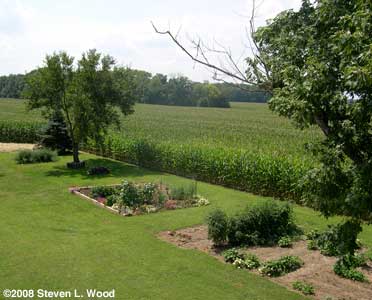


 And what may appear to be a commercial ad on our main or archive pages may be something I just liked. I got a kick out of posting a link last month to
And what may appear to be a commercial ad on our main or archive pages may be something I just liked. I got a kick out of posting a link last month to 


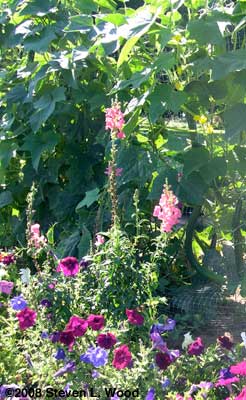



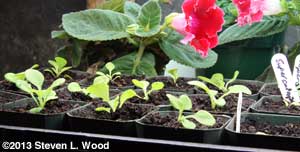






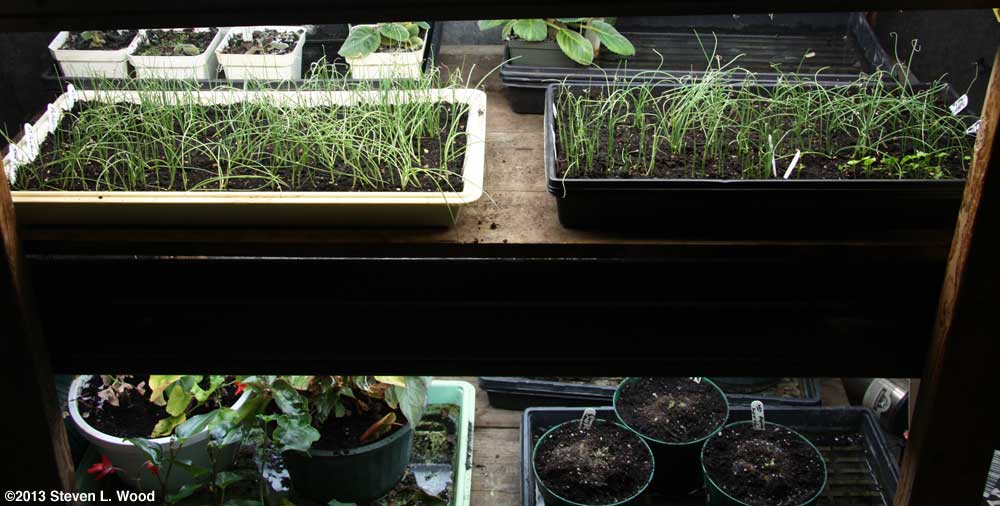






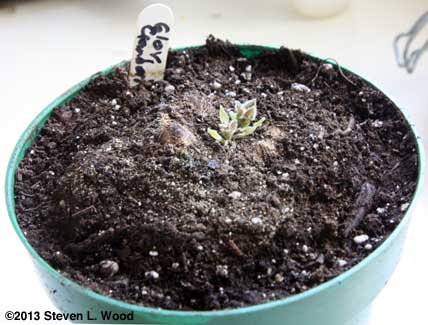
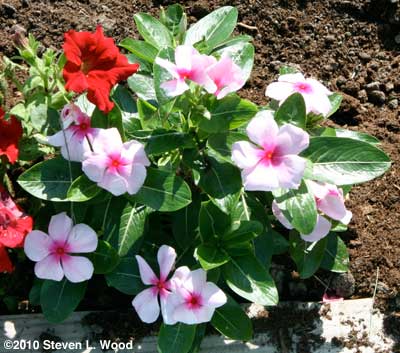




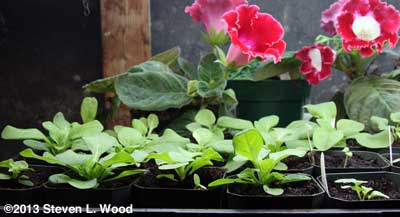
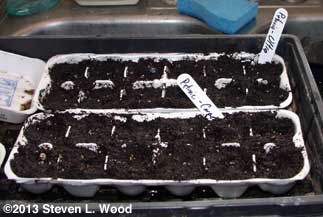

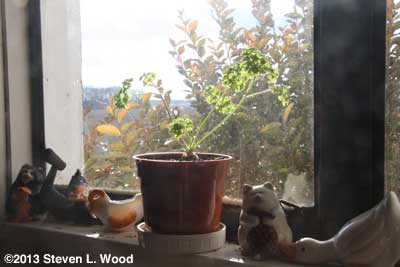

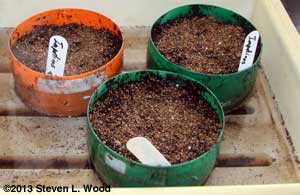

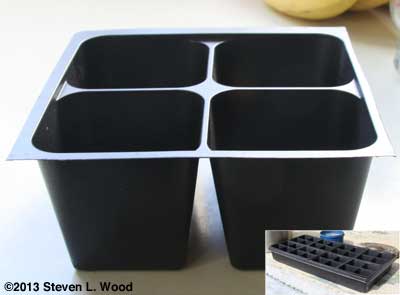
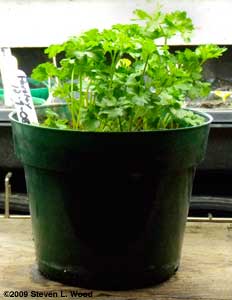

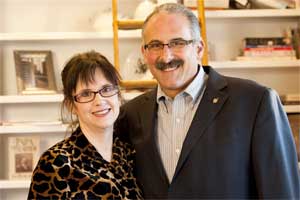



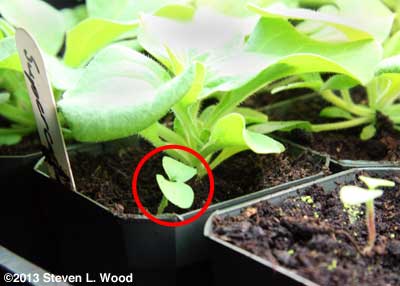


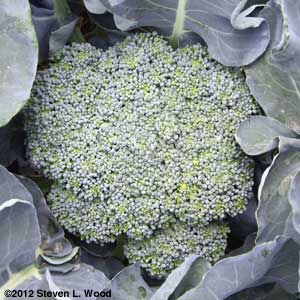


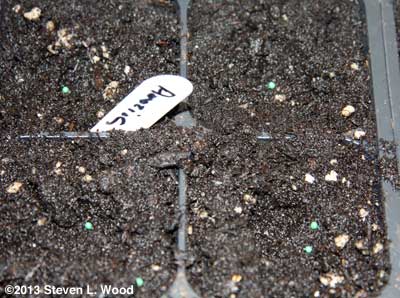
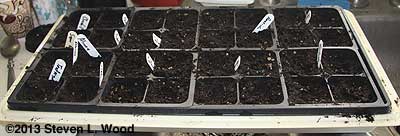





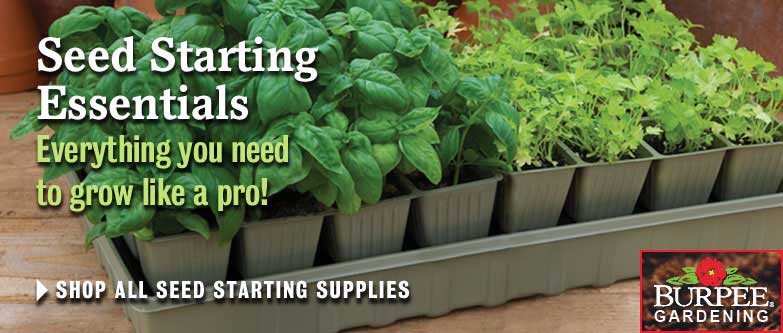





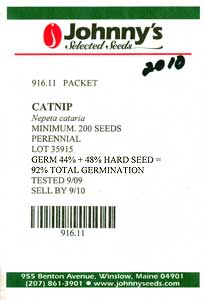
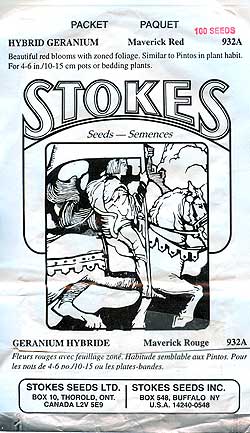
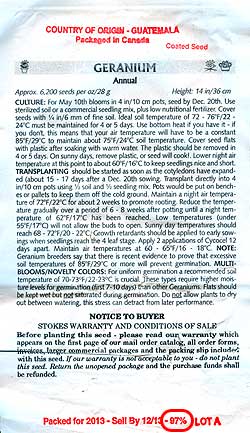

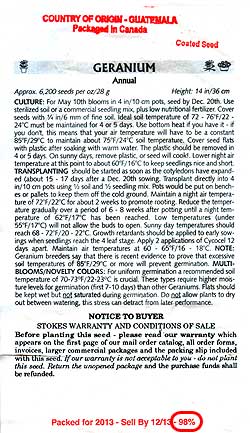


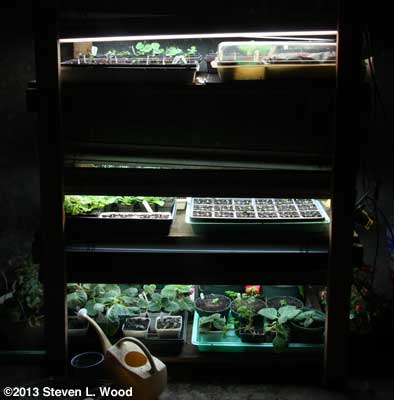


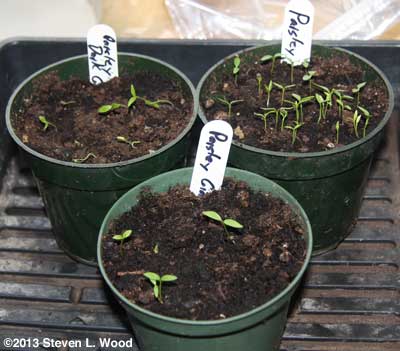
 Depending on which source one chooses, we're either just a bit or way behind on precipitation for February. But the overall outlook is still pretty good, as we're well ahead of average for the year so far. The new
Depending on which source one chooses, we're either just a bit or way behind on precipitation for February. But the overall outlook is still pretty good, as we're well ahead of average for the year so far. The new 